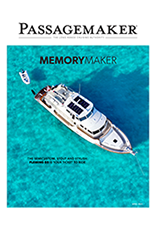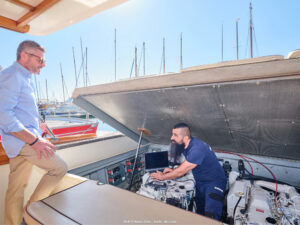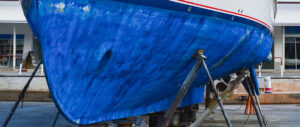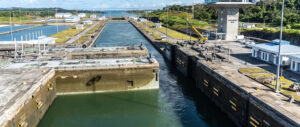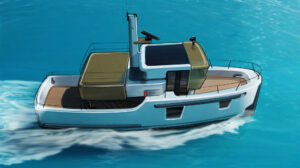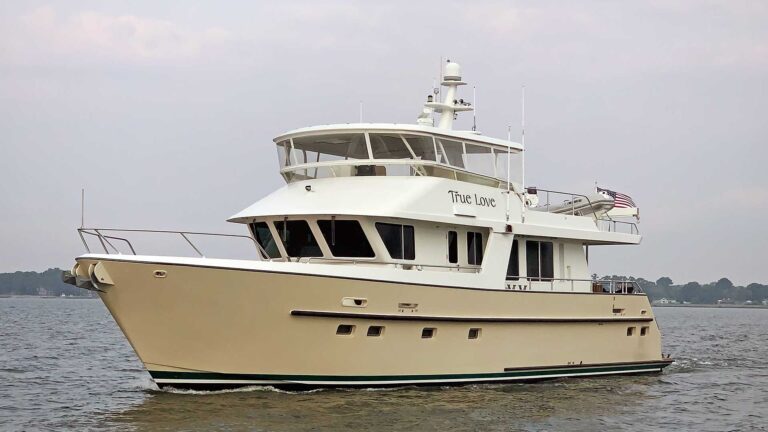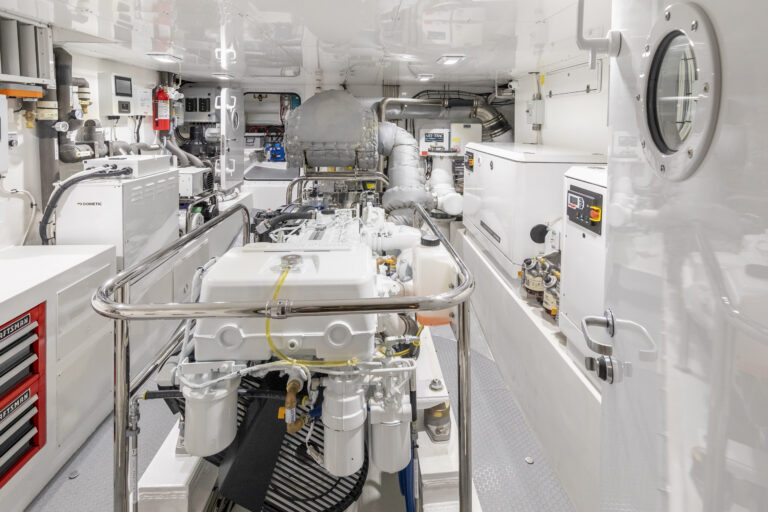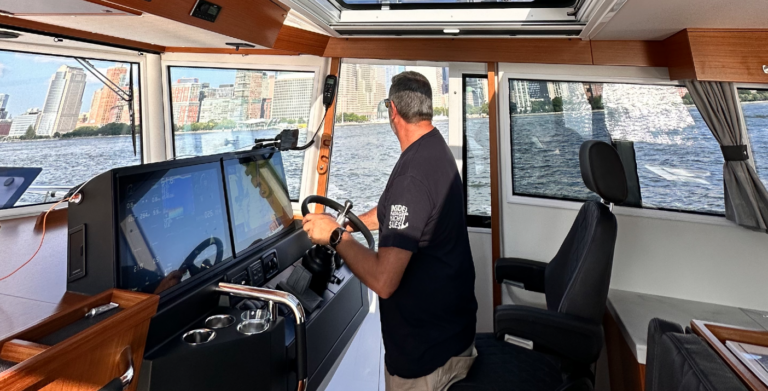
Last summer, on an extended camper-van vacation through Europe, my family became enthralled with Scandinavia. We were amazed with its seemingly endless natural beauty, majestic fjords, remote beaches and humble, handsome villages. As much as we saw from our camper, we imagined towing a boat and finding transient slips at the fishing harbors that dot the coastline. Cruising would allow us to explore even more of the region’s alpine lakes, inland rivers and deep fjords.
Back at work in Holland, I had my team start work on a towable vessel that we named Project C-Rover. Our design brief was for owners who pack the vessel and fuel up on the trailer; on the return, owners refuel, flush the engines, dump the waste tanks and clean up the boat before storing it for the next trip. Also, the design needed to adhere to towing regulations both in the U.S. and the European Union.

We wanted a boat that was adventurous deep in her bones, and that drew inspiration from a close friend’s shop, Dutch Rovers, which refurbishes vintage Land Rovers and Defenders. That shop gives clients what is essentially a new car enveloped in a classic package, ready to go out into the bush and be put through the paces. Many of the vehicles retain the patina and road rashes of a life well spent.
Similarly, Project C-Rover’s lines ensure a timeless look. And considering the myriad ways one can use (an abuse) the vessel, we designed a welded aluminum rigid structure for the hull. Above the waterline, the hull will have frames that support recyclable body panels to be constructed of foam or machine-pressed aluminum. Different panels in a range of colors and finishes will help to create a custom look, and the panels are easily replaced if they’re damaged during an adventure (assuming that the owner doesn’t want to keep the scar as a badge of honor).

Abovedeck is a one-level living space that modular construction opens to semi-custom layouts. The standard layout includes dining and a bench to starboard, adjacent to a galley. Aft, a gate on centerline provides access to the swim platform, with a pull-out ladder for easy egress to and from the sea. Space is allotted for a barbecue. From the salon, a bench extends into the cockpit. This area can be left open in the warmer months or fitted with panels to extend the boat’s usage in colder climes, and to extend the salon area.
The helm is placed almost at amidships for unobstructed, 360-degree views and access to the decks via sliders to port and starboard. The captain could maneuver in close quarters or locks, and could reach out a hand to grab lines and tie off mid-cleat without leaving the helm.

While the C-Rover would function well as a dayboat, she’d also be ideal for longer stays, with a head and shower, queen berth and convertible salon settee. Drawing inspiration from recreational vehicles, we added a pop-up roof tent that sits above the helm. Accessed via folding stairs, it functions as a sleeping terrace above the hardtop, sitting between the roof racks so kayaks and other water toys don’t have to be relocated. All told, the boat can sleep six people.
Outboards are the most suitable power for this concept, and are an excellent match to her glider hull for fast cruising or displacement speeds. A single, 300-hp engine will suffice, but owners can also choose a pair of gas or diesel outboards. Utilizing the heat from the engines, an under-sole grid would provide radiant heat soles and pre-warm a boiler for cold evenings.
Project C-Rover
LOA: 27ft. 5in.
Beam: 8ft. 4in.
Draft: 1ft. 9in.
Displacement: 5,500 lbs. (dry)
Fuel: 145 gal.
Water: 40 gal.
Power: 300-hp or 2x 300-hp gas or diesel outboards
This article was originally published in the September 2023 issue.
